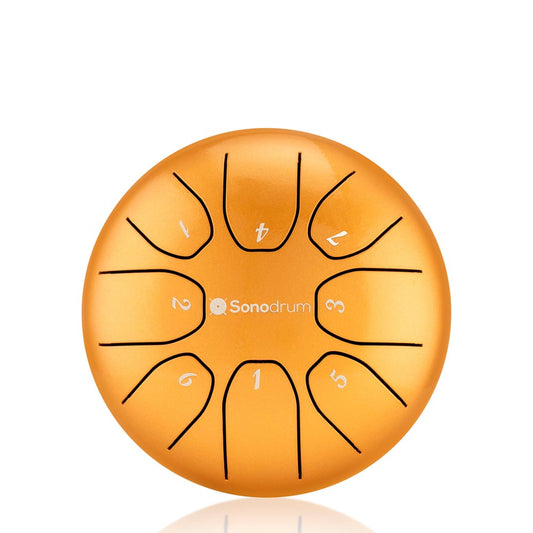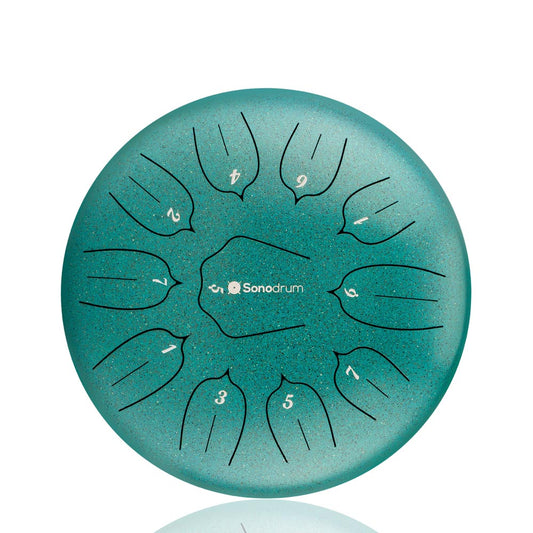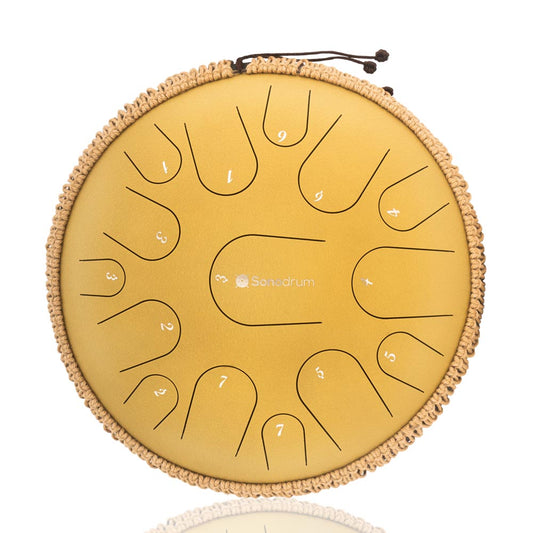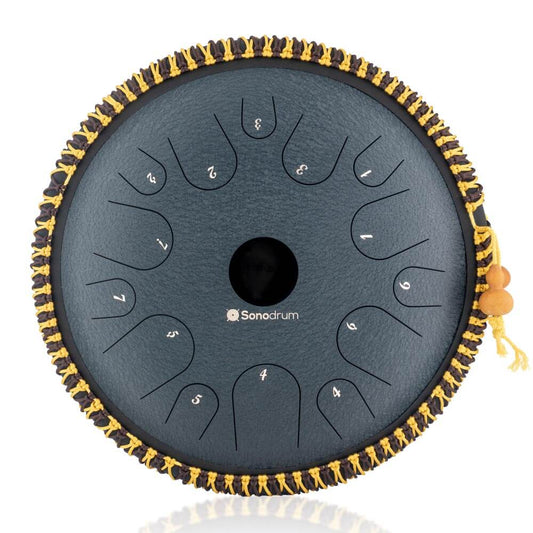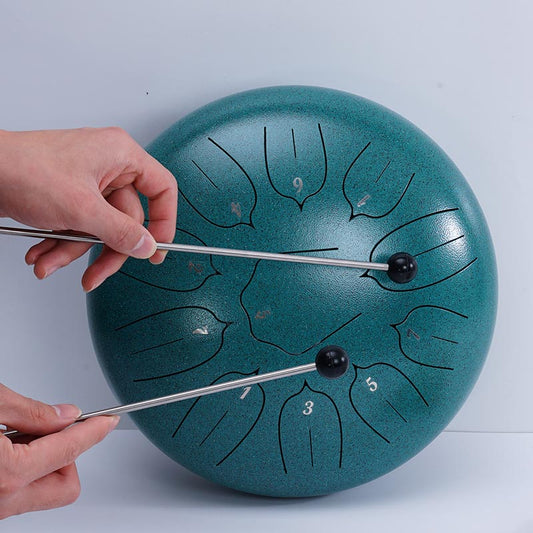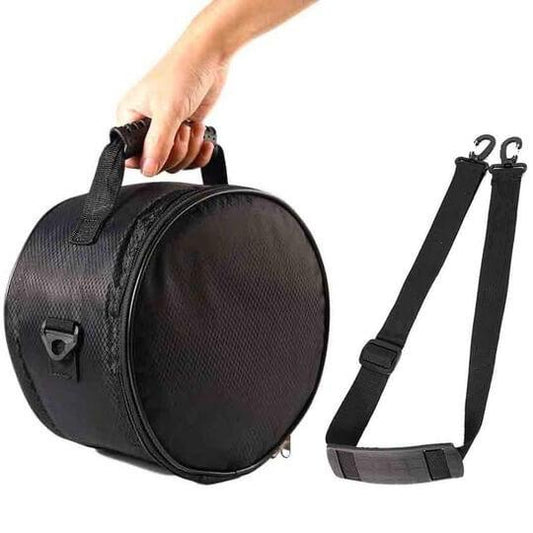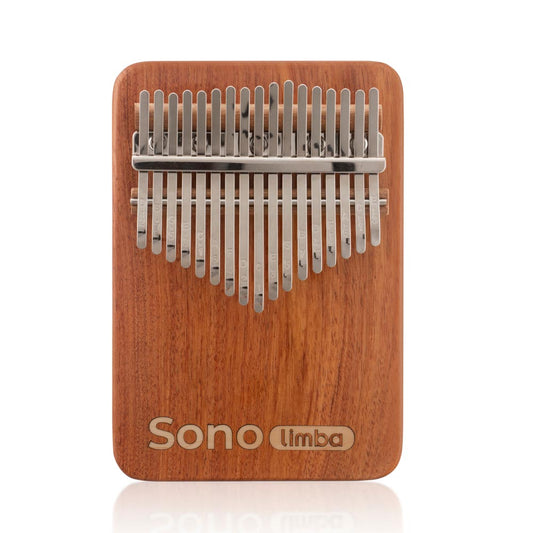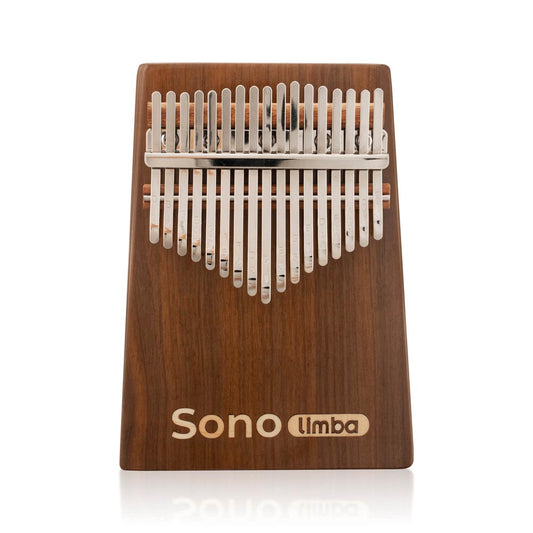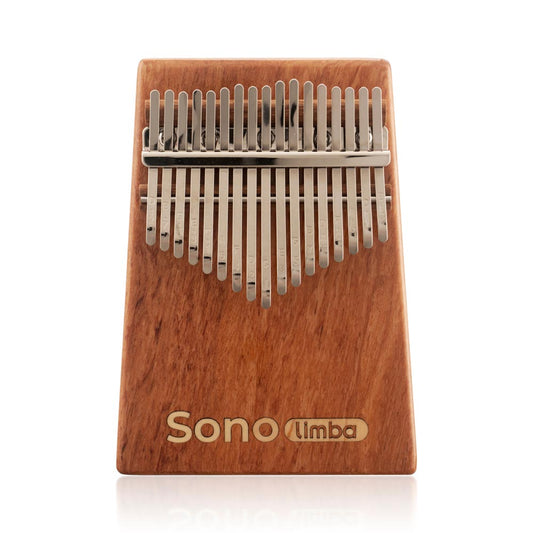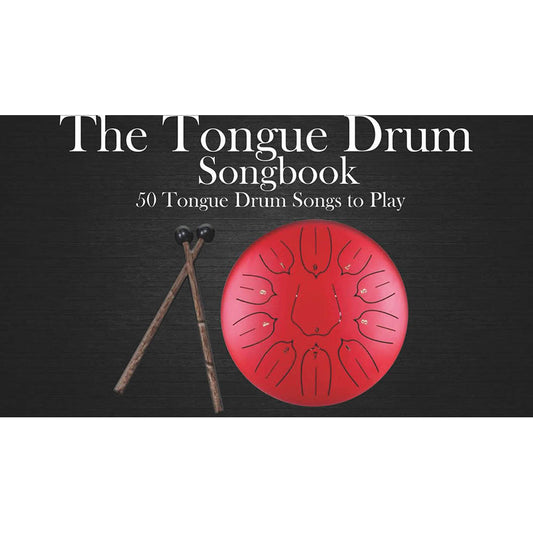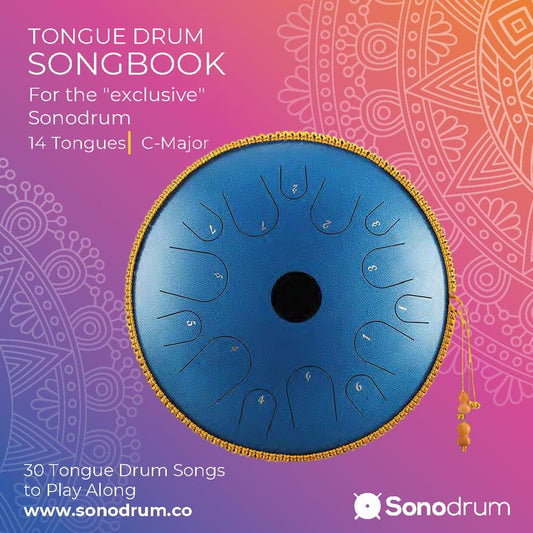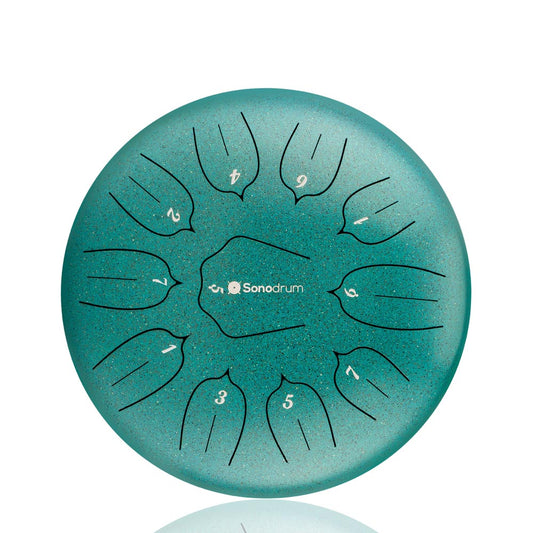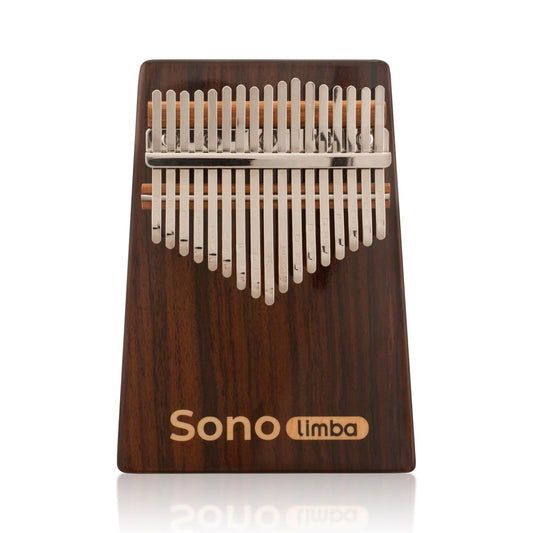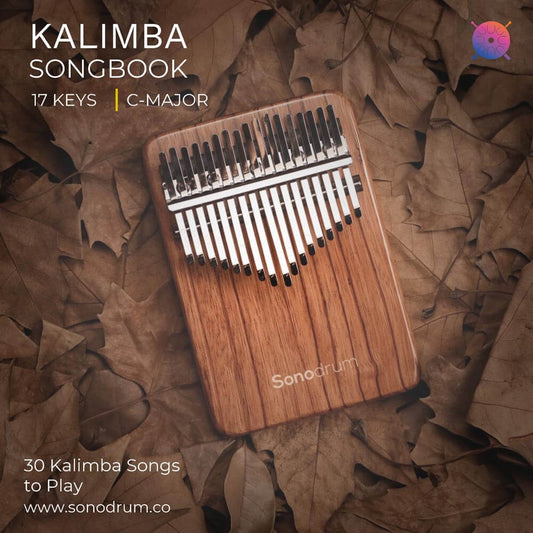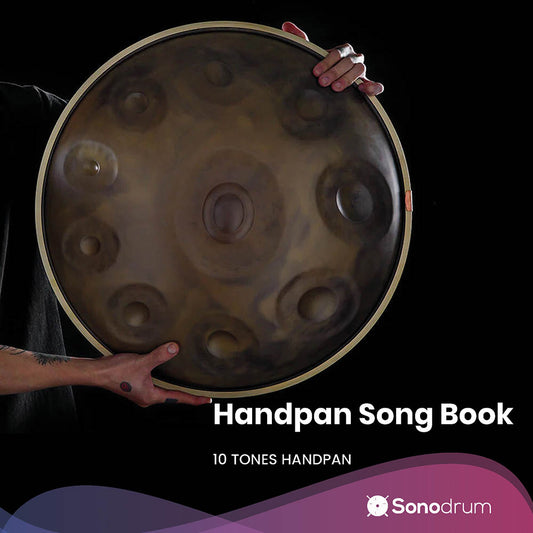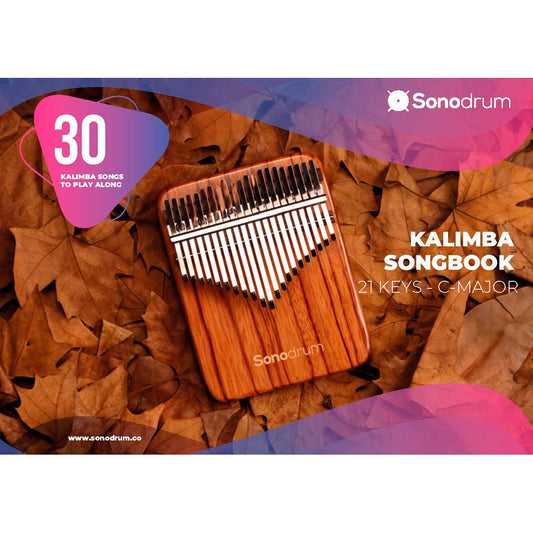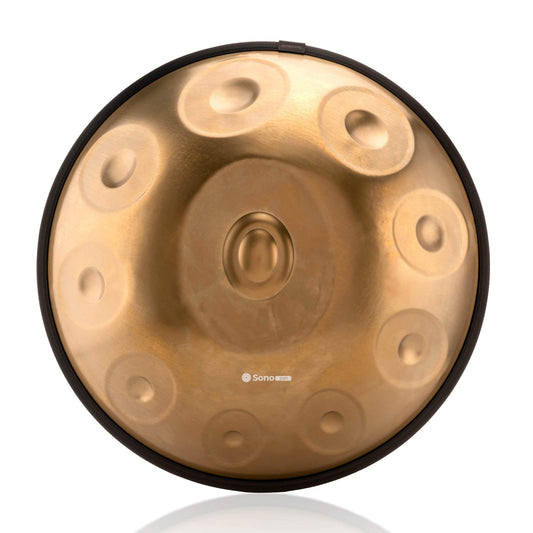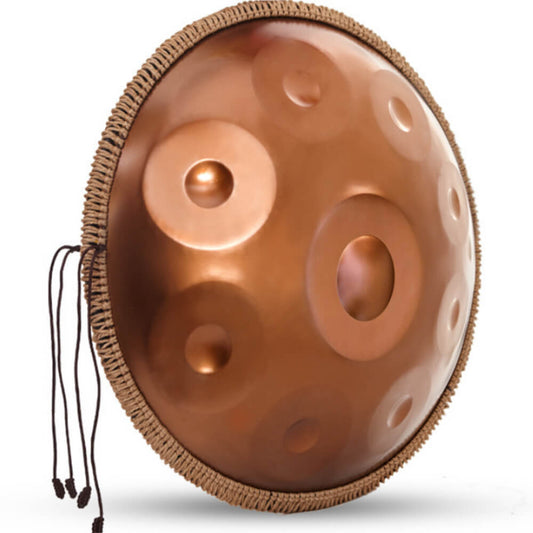-
Sonodrum Steel Tongue Drum "Standard" - Handmade - (5.5″ / 8″) - 8 Tongues – C Major
Regular price $79.95Regular priceUnit price per$159.95Sale price $79.95Sale -
Sonodrum Steel Tongue Drum "Standard″ - Handmade - 12″ - 11 Tongues - C Major
Regular price $139.95Regular priceUnit price per$279.95Sale price $139.95Sale -
Sonodrum Steel Tongue Drum "Premium" - Handmade - 13″ - 15 Tongues - C Major
Regular price $229.95Regular priceUnit price per$399.95Sale price $229.95Sale -
Sonodrum Steel Tongue Drum "Exclusive" - Handmade - 14″ – 14 Tongues – C Major
Regular price $299.95Regular priceUnit price per$499.95Sale price $299.95Sale -
2x Premium stainless steel mallets - 11.8″ / 30 cm
Regular price $19.95Regular priceUnit price per$29.95Sale price $19.95Sale -
Carrying bag for your Sonodrum
Regular price $14.95Regular priceUnit price per$39.95Sale price $14.95Sale -
Tongue Drum Songbook - 11 Tongues - C Major - Standard - 30 Songs - Download PDF
Regular price $9.95Regular priceUnit price per$14.95Sale price $9.95Sale -
Sonodrum Kalimba - African Coralwood - Sonolimba
Regular price $69.95Regular priceUnit price per$89.95Sale price $69.95Sale -
Sonodrum Kalimba - Walnut - Sonolimba
Regular price $69.95Regular priceUnit price per$89.95Sale price $69.95Sale -
Sonodrum Kalimba - Acacia Wood - Sonolimba
Regular price $69.95Regular priceUnit price per$89.95Sale price $69.95Sold out -
Sonodrum songbook with additional 50 songs in D major (PDF for download)
Regular price $9.95Regular priceUnit price per$14.95Sale price $9.95Sale -
Tongue Drum Songbook - 14 Tongues - C Major - Exclusive - 30 Songs - Download PDF
Regular price $9.95Regular priceUnit price per$14.95Sale price $9.95Sale -
Tongue Drum Songbook - 15 Tongues - C Major - Premium - 30 Songs - Download PDF
Regular price $9.95Regular priceUnit price per$14.95Sale price $9.95Sale -
(NEW) Sonodrum Steel Tongue Drum "Standard″ - Handmade - 12″ - 11 Tongues - D Major
Regular price $139.95Regular priceUnit price per$279.95Sale price $139.95Sale -
Sonodrum Kalimba - Rosewood - Sonolimba
Regular price $69.95Regular priceUnit price per$89.95Sale price $69.95Sold out -
Kalimba songbook - 17 keys - C major - 30 songs - Download PDF
Regular price $9.95Regular priceUnit price per$14.95Sale price $9.95Sale -
Handpan songbook - 10 tones - 30 songs - PDF download
Regular price $9.95Regular priceUnit price per$14.95Sale price $9.95Sale -
Kalimba Songbook - 21 Keys - C Major - 30 Songs - Download PDF
Regular price $9.95Regular priceUnit price per$14.95Sale price $9.95Sale -
Kalimba Protection Bag
Regular price $17.95Regular priceUnit price per$22.95Sale price $17.95Sale -
Handpan Sonodrum Sonopan
Regular price $1,499.00Regular priceUnit price per$1,799.00Sale price $1,499.00Sale -
Cord for Handpan / Sonopan
Regular price $39.95Regular priceUnit price per$49.95Sale price $39.95Sale
A Hang instrument is a fascinating and unique sound creation that has become increasingly popular in recent decades. Originally developed in 2000 by Swiss musicians Felix Rohner and Sabina Schärer, the Hang has since captured the attention and enthusiasm of people around the world. The Hang® is a registered trademark, although it is the same as a handpan or Pantam. You can find high-quality handpans at Sonodrum, which are also handcrafted, similar to the Hang instrument.
The Hang has evolved into a popular instrument in various music genres, from world music to ambient and meditation music to jazz and pop. It is appreciated and used by musicians worldwide to create unique and versatile sonic experiences. Learning to play the Hang instrument is quick; it is intuitive and rarely produces wrong notes.
In this article, we will take a closer look at the history, construction, playing technique, and cultural influences of the Hang instrument to develop a comprehensive understanding of this fascinating sound world. Stay tuned, or stay with the handpan - it's going to be interesting!
Buying Guide Enhancement
Structure the buying guide with clear, actionable insights: "When considering a Hang Drum, think about Scale and Tuning, Material and Craftsmanship, and Your Musical Goals. These factors determine the instrument's sound, durability, and suitability for your style. Whether you're seeking serene melodies for meditation or dynamic rhythms for performances, our guide ensures you find the perfect match.
Quality Evaluation Checklist
Develop a checklist for assessing Hang Drum quality: "Assessing a Hang Drum’s Quality: Look for seamless craftsmanship, consistent and clear tonal quality across all notes, and high-grade material resistant to corrosion and wear. Our checklist helps you discern the best from the rest, ensuring your Hang Drum resonates with purity and longevity.
The Origin and History of the Hang Instrument
The Hang instrument originated in the year 2000 when it was developed by Swiss musicians Felix Rohner and Sabina Schärer. Both were members of the company PANArt, specializing in the manufacture of gongs and other musical instruments. Inspired by the sonic diversity of the steel drums and other ethnic percussion instruments, they began designing a new instrument that would produce a unique and captivating sound. It later became known as the Handpan. You can buy a Hang instrument, either new or used, or explore other handpans, which are likely to be more cost-effective while still maintaining quality similar to that of a Hang.
Creation by Felix Rohner and Sabina Schärer in the year 2000
Rohner and Schärer conducted extensive experiments with various materials and shapes until they finally conceived the Hang. The instrument consists of two concave metal shells that are connected and have a central opening. This shaping allows the Hang to produce its characteristic, harmonious sound.
The Structure and Sound of the Hang Instrument
Now, let's take a closer look at the structure of this UFO-shaped instrument before you consider learning the Hang instrument or buying one. Keep in mind that you can also buy a used Handpan or train on a tongue drum before making the larger investment in wanting to buy a Hang instrument
Playing the Hang Instrument
The Hang Instrument emanates a soothing and melodic tone, frequently likened to that of a gong. Possessing a tranquil and uplifting quality, it can evoke a meditative atmosphere. Its simple playing technique allows newcomers to effortlessly create pleasant sounds and explore their musical ingenuity.
Hand-playing with Various Striking Techniques and Sound Manipulation
The typical way to play the Hang instrument is with the hands. Players use various striking techniques to produce sounds, including fingertip strikes, palm strikes, and even stroking across the tone fields. The manner of striking can influence and modulate the sound. Players can create both melodies and rhythms and vary the tonal colors of the Hang.
The intuitive playing style of the Hang allows beginners who want to learn the Hang instrument to quickly produce appealing sounds and become musically creative. By experimenting with different striking techniques and combinations, players can develop individual forms of expression and continue their musical journey on a tongue drum or the Hang.
Conclusion
Since its development in the year 2000, the Hang instrument has evolved into a fascinating and popular musical instrument. With its unique sound, meditative playing style, and versatile applications, it has captivated both musicians and audiences worldwide.
The history of the Hang, its creation by Felix Rohner and Sabina Schärer, as well as its distinctive structure and sound, make it a unique instrument in the world of music. It has not only established itself in meditative music, world music, and film scores but also finds applications in therapeutic contexts.
Although genuine Hang instruments are limited in availability and can be costly, the search for this special instrument is worthwhile. Alternatively, other similar instruments like Sonodrum Handpans are available. Regardless of which option you choose, the Hang instrument offers you a musical journey full of expression, creativity, and emotional depth.
Let Sonodrum guide you to your perfect Hang Drum. Consider your experience level, preferred music genres, and performance settings. From serene, meditative pieces to vibrant, rhythmic compositions, our personalized recommendations pave the way to discovering your unique sound.
FAQs
What is a Hang instrument?
The Hang, also known as the Hang Drum or Handpan, is a hand-played percussion instrument that possesses a unique and calming sound quality. Its distinctive shape resembles a flat bowl with a convex top and an arrangement of typically 8 to 9 tone fields on its surface. These sound fields are often arranged in a circular pattern, with the central area referred to as the 'Ding.'
How is the Hang instrument played?
The Hang instrument is typically played using the hands. Various striking techniques, such as fingertip strikes, palm strikes, and stroking across the tone fields, are used to produce sounds. By striking and touching the precisely tuned tone fields, melodies, rhythms, and harmonious sounds are created.
In which music genres is the Hang instrument used?
The Hang instrument is used in various music genres, including meditative music, world music, and film scores. It also finds application in a therapeutic context. Its unique sound and versatile sonic qualities make it a popular instrument in these genres.
Where can I buy a Hang instrument?
Due to limited availability, it can be challenging to purchase a Hang instrument. The original manufacturers, Felix Rohner and Sabina Schärer, have ceased production. However, there are other manufacturers and Handpan builders who produce similar instruments. It is advisable to search online for specialized dealers or explore second-hand markets.
Are there alternative instruments to the Hang instrument?
Yes, there are alternative instruments to the Hang instrument, such as Handpans. Handpans are similarly constructed and also produce harmonious sounds. They are produced by various manufacturers worldwide and can serve as an alternative when an original Hang instrument is not available.
Can I learn to play the Hang instrument on my own?
Yes, you can learn to play the Hang instrument on your own. However, it requires time, practice, and dedication to master the various playing techniques. There are online tutorials, sheet music, and learning materials that can assist in the learning process. The intuitive nature of the instrument also allows beginners to quickly produce appealing sounds and continue their musical journey with the Hang.

